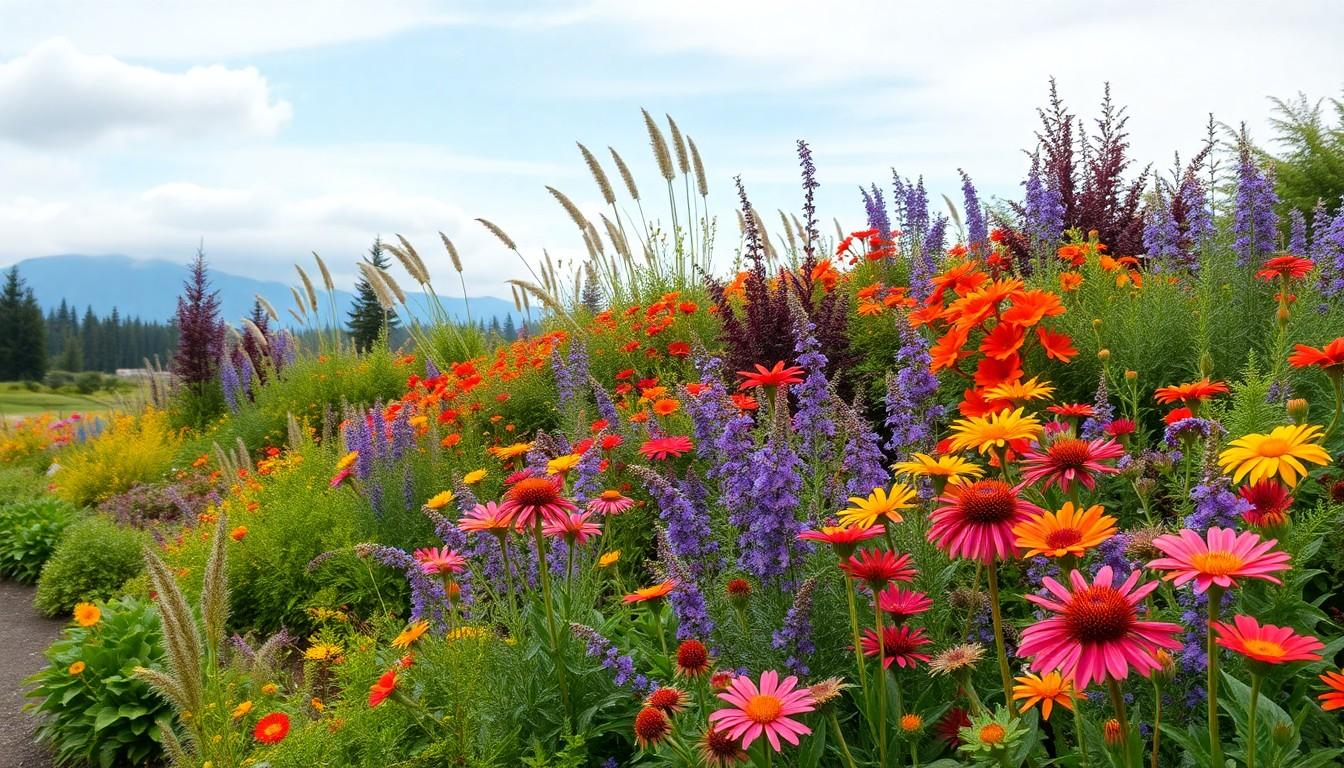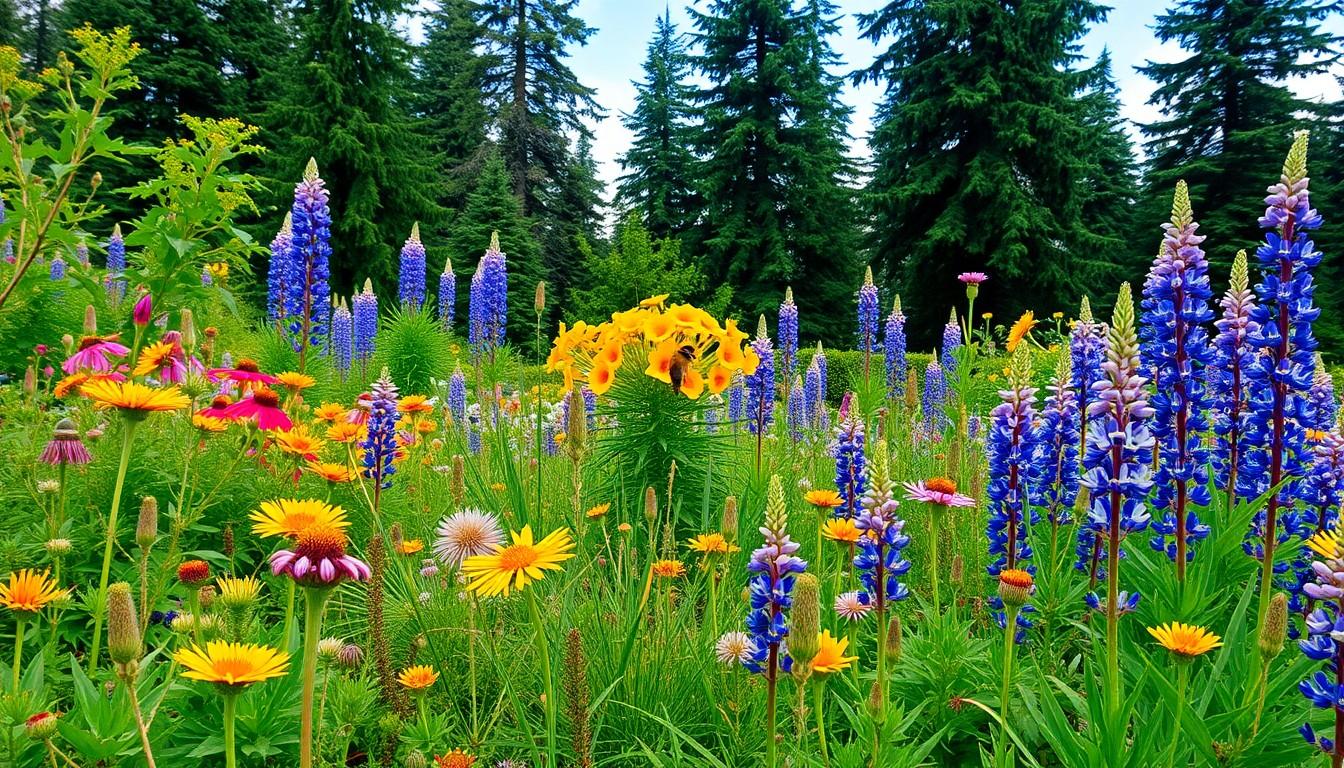In the lush landscapes of the Pacific Northwest, native plants do more than just look pretty—they’re the unsung heroes of the ecosystem. Picture vibrant wildflowers and towering trees that not only thrive in the region’s unique climate but also provide food and shelter for countless creatures. It’s like a botanical party where everyone’s invited, and the guest list is exclusively local!
Overview of PNW Native Plants
PNW native plants exhibit remarkable diversity, comprising various species uniquely adapted to the region’s ecosystems. These plants flourish in different habitats, from moist forests to arid slopes, showcasing resilience across varying environmental conditions.
Wildflowers such as camas, lupine, and indian paintbrush add color to meadows and forests, attracting pollinators vital for ecosystem health. Trees like Douglas fir, western red cedar, and ponderosa pine dominate the landscape, providing shelter for numerous bird and mammal species.
In addition to their beauty, native plants play critical roles in soil stabilization and water conservation. Their deep root systems enhance soil health while reducing erosion. When established, these plants require less water and fertilizer compared to non-native species, making them sustainable choices for gardeners.
Wildlife relies on these plants for food and habitat. Nectar-rich flowers support bees and butterflies, while seeds and foliage sustain birds and small mammals. Optimal growth conditions arise from PNW native plants coexisting with local fauna, fostering a balanced ecosystem.
Cultivating awareness about these plants contributes to protecting the regional environment. Educational programs and conservation efforts highlight the significance of planting native flora in urban and rural settings. By prioritizing native plants, communities contribute to habitat restoration and biodiversity preservation.
Efforts to promote native plant gardening showcase the beauty and ecological importance of these species. Local nurseries provide resources for individuals to select suitable plants, encouraging the growth of vibrant, self-sustaining gardens.
Benefits of Using PNW Native Plants

PNW native plants offer a range of significant benefits for both the environment and personal gardens. Their unique adaptations enhance local ecosystems, providing essential resources for wildlife while adding beauty to landscapes.
Environmental Advantages
Native plants thrive in the Pacific Northwest’s conditions, making them naturally resilient to local pests and diseases. These species contribute to soil stabilization by reducing erosion, especially along riverbanks and slopes. Water conservation occurs since native plants use less irrigation compared to non-natives, promoting sustainable gardening practices. Local pollinators, such as bees and butterflies, are drawn to blossoms, which supports biodiversity. Enhanced soil health results from native plants’ root systems, fostering a thriving ecosystem.
Aesthetic Appeal
Visual variety characterizes native plants, with a spectrum of colors and textures. Blooming wildflowers provide seasonal splashes of color, enhancing gardens and natural spaces. Native species such as ferns, boulders, and shrubs complement each other, creating cohesive and attractive landscapes. Local flora often requires less maintenance, allowing gardeners to enjoy vibrant displays without intensive labor. Gardeners foster a sense of place by incorporating native plants, celebrating the uniqueness of the Pacific Northwest’s natural beauty.
Common Types of PNW Native Plants
The Pacific Northwest showcases a wide variety of native plants that thrive in its diverse ecosystems.
Trees and Shrubs
Douglas fir stands as one of the most iconic trees, providing habitat for wildlife and timber resources. Western red cedar supports many bird species while offering aromatic wood used in crafts. Pacific madrone features striking bark and evergreen leaves, adding visual interest to landscapes. Salal, a dense shrub, thrives in shaded areas and produces edible berries for wildlife. Serviceberry provides beautiful spring blooms and tasty fruit in summer, attracting pollinators and birds. These trees and shrubs play key roles in maintaining local biodiversity while enhancing the overall landscape.
Perennials and Annuals
Camas blooms with stunning blue flowers, attracting pollinators and showcasing seasonal beauty. Lupine, with its tall spires, brings vibrant colors to gardens and meadows while enriching the soil through nitrogen fixation. Indian paintbrush features unique red and yellow hues, creating eye-catching displays that support various pollinators. Oregon grape serves as an evergreen perennial, offering yellow flowers followed by blue berries that benefit wildlife. Yarrow’s hardy nature and clusters of white flowers provide additional color and beauty, while attracting beneficial insects. Collectively, these perennials and annuals contribute to the rich tapestry of the PNW’s natural ecosystem.
How to Incorporate PNW Native Plants in Your Garden
Incorporating PNW native plants into a garden enhances biodiversity and supports local ecosystems. Careful planning leads to successful integration.
Soil Preparation
Preparing the soil involves ensuring proper drainage and fertility. Native plants thrive in well-drained soils; thus, testing the pH level is crucial. Amendments such as compost enrich the soil, improving moisture retention and nutrient availability. Additionally, removing invasive species promotes healthy growth. Mixing organic matter into the top layer aids in establishing a suitable environment. After preparation, allowing the soil to settle before planting contributes to overall success.
Planting Techniques
Successful planting relies on proper techniques that support native plants’ growth. Digging holes twice the width of the root ball allows roots to expand comfortably. Ensuring the top of the root ball is level with the soil surface encourages healthy growth. Surrounding the plant with mulch maintains moisture and suppresses weeds. Watering immediately after planting minimizes transplant shock and establishes roots in the new environment. Spacing plants according to their mature size fosters healthy air circulation and prevents overcrowding.
Conclusion
Embracing PNW native plants not only enhances gardens but also supports the region’s unique ecosystems. These resilient species thrive in local conditions and require minimal maintenance while providing essential resources for wildlife. By choosing native plants, gardeners contribute to biodiversity and promote sustainable practices.
The beauty of these plants adds visual interest to landscapes, connecting people with the natural heritage of the Pacific Northwest. Through education and community involvement, awareness around the importance of native flora can grow, fostering a deeper appreciation for the environment. Incorporating native plants into gardens is a rewarding way to celebrate local ecology and ensure a thriving future for both plants and wildlife.

